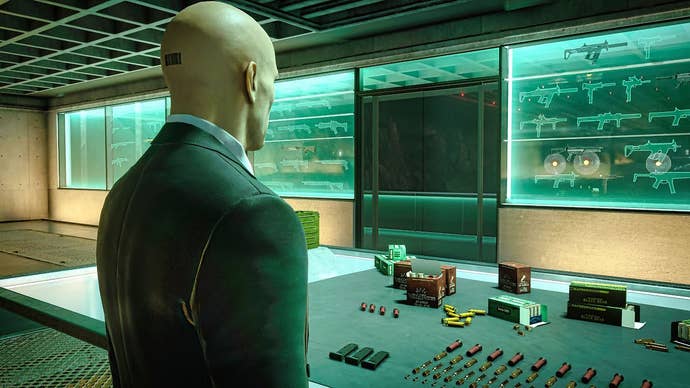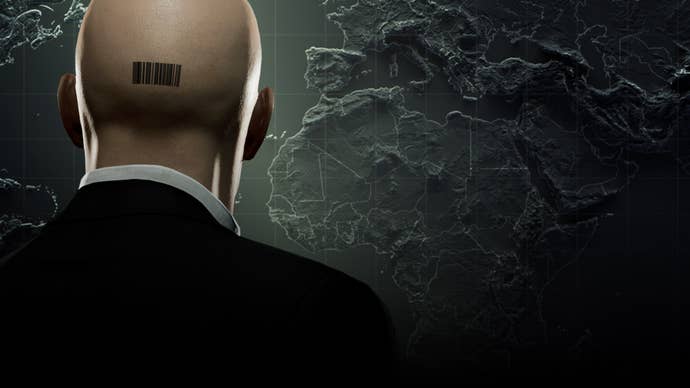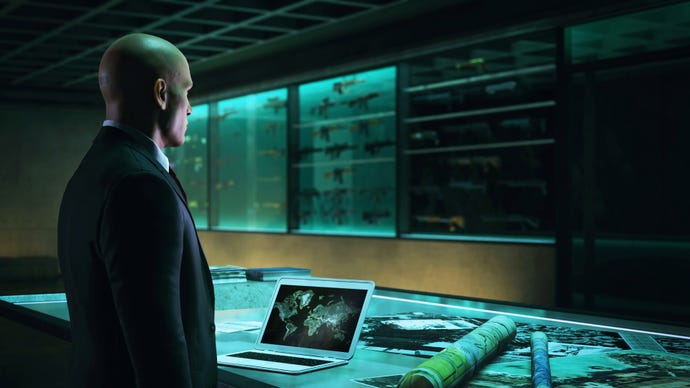Hitman Freelancer is a fantastic bonus atop a modern masterpiece
The latest update for the generation's best stealth game is here – and it makes a perfect game even more interesting.
The modern Hitman Trilogy has just had a rebrand. It requires a bit of explaining, but basically now the entire trilogy now lives inside Hitman 3, which itself has been rebranded Hitman: World of Assassination. The other two games will be delisted from storefronts to avoid confusion. This probably wasn’t the plan at the start – back when Hitman 2016 was an ill-advised episodic jaunt for Square Enix – but it’s a smart and fitting close to this saga: one huge game, flush with content, all available at a very reasonable price.
And, god, what a package it is. Without a shadow of a doubt, the package that’s now on sale as the singular modern Hitman game is one of the best deals in gaming, at least aside from subscription services that give you loads of games. If you’re going to buy a single game, Hitman is an excellent choice – emergent in a way that means it seldom gets old, with plenty of variety in levels and objectives. It’s hugely replayable. And it just got more so.
Launched alongside the merging of the entire experience into the ‘World of Assassination’ repackaging comes Hitman Freelancer, a new mode that genuinely probably could’ve been a fairly paid DLC, but IO Interactive has just served it up free. It’s bloody brilliant, and it might actually now be my absolute favorite mode in a game that’s already tremendously enjoyable.
The short-hand way of explaining Freelancer is to say that it’s a roguelike mode; you undertake a series of hits as Agent 47 across the many maps that make up all three Hitman games – but much is randomized. If you know the level inside-out, elements of their layout won’t have changed. The main storyline events are still unfolding, and the rat poison or hidden guns will still be where you remember on each map, but your target is entirely random, and to some extent, so too is the gear you’ll be able to parachute into the job with.

Successfully completing hits and other side objectives rewards ‘Mercers’, credits which can be used to buy new gear and equipment for that and future hits. Picking up guns and other key items and carrying them to the level exit after carrying out a hit lets you stash them at your lavish home base – a full 3D space you can explore and unlock new areas of – and then take them out for future missions. Fail a mission, however, and you’ll lose half your Mercer currency and any equipment you’re currently carrying. Fail one too many times and your ‘campaign’ is over, wiping the slate relatively clean for another run.
A few things do carry over: non-special weapons remain available to be equipped unless lost on a mission even if a campaign is failed, and a general freelancer ‘Mastery’ level increases some of your opportunity, such as by increasing the amount of gear you can carry into a mission. But other than that, it’s Hitman Unchained; divorced from its usual structure, which in turn unleashes the brilliant sandbox IO Interactive crafted with this trio of games.
It’s as hard as nails, as well. For a start, I think you have to unlearn a lot about what you’ve learned about Hitman. Knowing the level layouts will help, and the main story campaign will teach you those, but other than that, Freelancer just feels very different. There’s zero hand-holding, and if you want something like an elaborate accident kill, there’s no cute story thread to follow that breadcrumb-trails you to that climactic moment – you instead have to manufacture it yourself.

Early on, especially, you’re naked of equipment and just sort of stuck. The fancy methods aren’t open to you unless you’re some sort of sick Hitman savant, and so I found myself taking 47 back to basics – an unsilenced pistol, because I was yet to access a silencer, and a few quick pops. Sometimes, I’d manage to nail someone from mid-distance without being even seen. Other times, I couldn’t create a situation to leave my target alone, so I’d just walk up to them in plain sight and do ‘em, Jack Ruby style, then fight my way out.
I’ve never played Hitman this way. It was new, it was exhilarating. It breathed new life into a game I’ve already played in some form or another for well over a hundred hours. But as the campaigns evolved – when I was lucky enough to advance them – I’d unlock new tools and objectives which would in turn invite experimentation and other new styles of gameplay. Rarely did I resort to the sort of approach I typically took with the story missions or elusive targets. This mode hits different.
Every couple of missions, the traditional assassinations give way to an even more open-ended mission – where you don’t have a strictly defined target or two, but just a description of one. You might be told that they have red hair, are wearing earrings and a hat, smoke, and are food-obsessed, for instance. If you use that magic Hitman-vision that 47 has, instead of defined targets glowing red you’ll find multiple individuals who fit the broad description glowing purple - and it’s up to you to try to figure out which one is the actual target.
This, again, changes the game. You have to stalk these characters. Snapping a photo of them on your camera will allow you to study the photo carefully for details. Does this person have earrings? Okay, they fit the physical description – time to hang around in as unsuspicious a manner as possible to see if they light up a cigarette while obsessively snacking. This isn’t necessarily easy, either – as the campaign escalates, there’s lookouts who’ll see through your disguises in a snap, and counter-assassins who are looking to take you out first.

This sounds like it has the potential to be boring, but it isn't. It's a slowing down of events in a way that texturally enriches the Freelancer experience. While you could indiscriminately kill all of the potential suspects, doing so is a huge risk – each kill is a risk, and each risk could take away your items, make the remainder of the campaign harder, or end the campaign entirely. So, you skulk. You watch. You place your bet. And, god damn it, the wrong one again? I did this a lot (but I’m getting better at it now).
All of this is built on top of the systems that already existed, but the result is a new type of campaign, eminently replayable, and it also sort of highlights what was so special about each of these sandboxes to begin with. I’ve compared them to intricate Rube Goldberg machines as level design in the past – but they’re actually a little less like that here, where there’s no guided dominoes-fall kills to set up. Instead, the simulation is left to slowly unravel in all its glory, where it has a logic, but also definitely a typical sort of twisted logic that can only work in a video game.
Honestly, I can scarcely believe how brilliant it is. I can hardly believe that it’s free. But also, more than that, I can’t quite comprehend how smart this is as a piece of design. It reuses all of Hitman 1, 2, and 3 and yet doesn’t feel like a content reuse victory lap. There is no meat left on this carcass; it’s all been sublimated into this hearty broth.

Anyway. I don’t know what more to tell you. I already firmly believed IO’s new Hitman Trilogy was one of the greatest games of its kind. The more I reflect on it, and with these additions and tweaks that bring everything together into one package, I firmly believe that this is one of the finest bits of gaming ever, full stop. Period. However you want to write it.
And, god, as a life-long Bond fan… I can’t wait to see what this studio does with that franchise. In the meantime, however, this is a more than welcome distraction.

